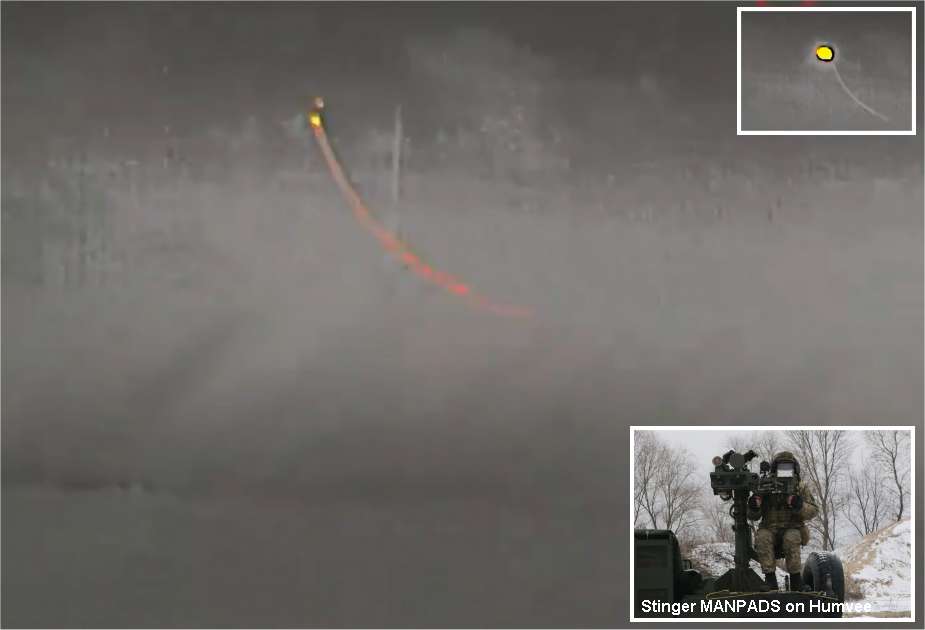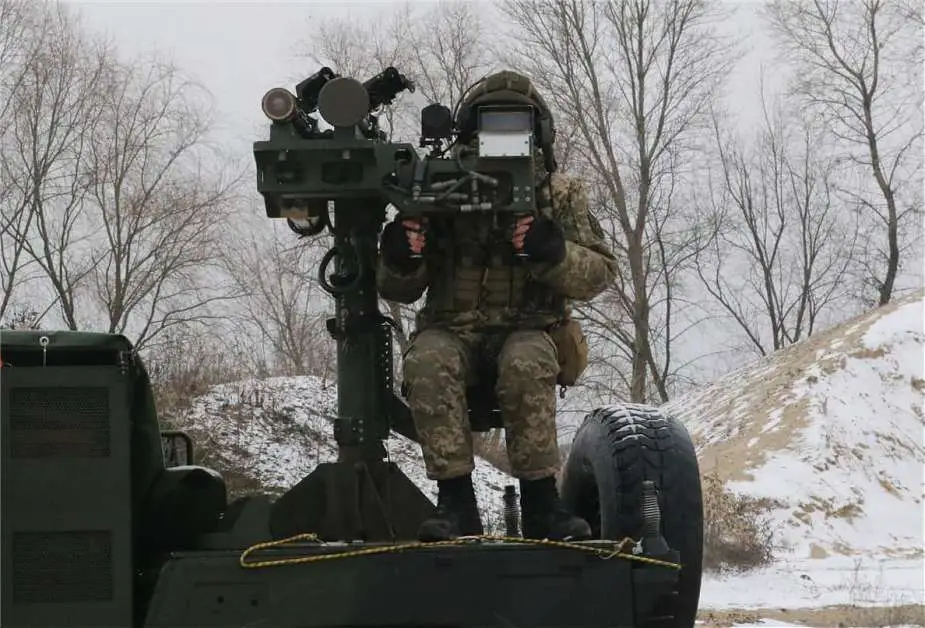In a remarkable display of skill and ingenuity amidst a challenging military context, Ukrainian soldiers from the President's Special Brigade have successfully downed a Russian cruise missile using the FIM-92 Stinger MAn-Portable Air Defense System (MANPADS). This event took place during a large-scale Russian aerial drone and missile assault on the night of March 22, 2024.
Follow Army Recognition on Google News at this link

Ukrainian soldiers use American-made FIM-92 Stinger MAn-Portable Air Defense System to destroy a Russian cruise missile. (Picture source Video Footage Ukrainian army)
On March 12, 2024, utilizing the Presidential Drawdown Authority, the United States declared a $300 million aid package for Ukraine, primarily comprising ammunition that Ukraine urgently requires. Notably, this package features FIM-92 Stinger MANPADS (MAn-Portable Air Defense System), which are man-portable surface-to-air missile systems. The delivery of this aid is particularly timely, aligning with a surge in Russian air activities.
The Russian aerial attack targeted multiple Ukrainian cities, including Kharkiv, Zaporizhzhia, and Kryvyi Rih, with a primary focus on dismantling the country’s energy infrastructure. Additional aerial strikes were reported across a wide swath of Ukraine, touching regions as diverse as Khmelnytskyi, Odesa, Mykolaiv, Vinnytsia, Kirovohrad, Lviv, Sumy, Poltava, and Ivano-Frankivsk oblasts.
The utilization of the FIM-92 Stinger MANPADS system under conditions of reported missile shortages underscores the Ukrainian military's resilience and adaptability. The Stinger system, originally developed by the United States, is a shoulder-fired surface-to-air missile system designed for downing aircraft with infrared homing. Its use in intercepting a cruise missile speaks volumes about the system’s versatility and the high level of proficiency among Ukrainian forces.
The FIM-92 Stinger is an American-made man-portable air-defense system (MANPADS), which was not the first of its kind but has become one of the most widely recognized and utilized systems globally. Developed by General Dynamics (now part of Raytheon Technologies), the Stinger is designed for engaging low-flying aircraft, such as helicopters and planes, and has been adapted over time to address a broader range of threats including unmanned aerial vehicles (UAVs) and, in certain instances, cruise missiles.
The system uses an infrared-homing surface-to-air missile, meaning it locks onto the heat signature of its target for guidance. The missile itself is launched from a tube, which also serves as its storage container. Once launched, the missile is propelled by a solid-fuel rocket motor, guiding itself to the target using its infrared seeker head.
The Stinger's operational effectiveness relies on its "fire-and-forget" capability, allowing the operator to take cover or move to a new position immediately after launch. This feature, combined with its portable nature, makes it a versatile and strategic tool for infantry units to protect airspace against enemy aircraft within its engagement envelope.
The FIM-92E variant of the Stinger MANPADS, also known as Stinger—RMP Block I, represents a pivotal moment in the evolution of air defense capabilities, specifically tailored to meet the challenges of modern warfare. Introduced with groundbreaking enhancements, including a new rollover sensor and revised control software, this variant significantly advanced the missile system's performance and versatility.
The introduction of a new rollover sensor was a critical development, designed to enhance the missile's flight behavior. This sensor enabled the Stinger to maintain its trajectory and stability, even when executing complex maneuvers, thus improving its hit probability against fast-moving and agile targets. This feature was particularly important in environments where the engagement window is extremely limited, and precision is paramount.
Equally important was the revision of the control software, which allowed for refined guidance and control capabilities. These updates enabled the Stinger to more effectively track and engage smaller, more elusive targets such as drones, cruise missiles, and light reconnaissance helicopters. The software improvements expanded the system's engagement envelope, allowing it to address a wider range of threats with increased effectiveness.

Ukrainian Stinger DMS mounted on a HMMWV. (Picture source Wikimedia)
The launch of the FIM-92E variant in 1995 marked a significant upgrade over previous versions, to the extent that almost the entire stock of U.S. Stinger missiles was replaced by this enhanced version. This transition underscores the recognition of the evolving nature of aerial threats and the need for air defense systems to adapt accordingly.
The capability of the FIM-92E to engage and neutralize cruise missiles highlights a remarkable advancement in MANPADS technology. Cruise missiles, known for their low-altitude flight paths and high precision, present a challenging target for most conventional air defense systems. The Stinger—RMP Block I's enhanced targeting and control features enable it to counter these sophisticated threats effectively, providing a critical defense capability in the modern battlefield context.
The successful deployment of the Stinger MANPADS (MAn-Portable Air Defense System) against a cruise missile is noteworthy given the system's evolution since its inception. Originally designed to target aircraft, the system has been upgraded over the years to engage a broader range of threats. This incident not only highlights the Stinger’s capability to counter varied aerial threats but also showcases the Ukrainian military's strategic use of available resources to defend against sophisticated assaults. The ability to adapt and effectively use such systems in unconventional ways is a testament to the innovative spirit of the Ukrainian defense forces in the face of adversity.
News Russia Ukraine War















